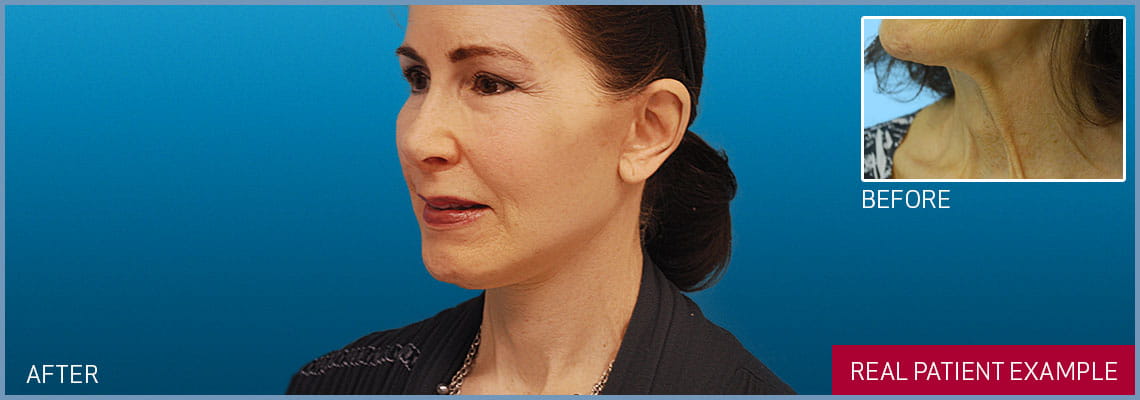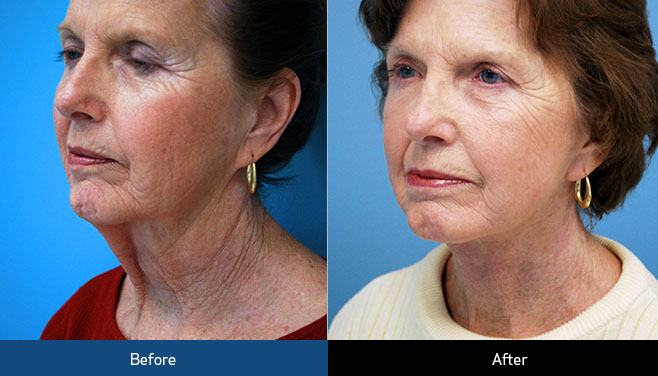Synkinesis

Injury to the facial nerve (Bells palsy, Ramsay Hunt, trauma, tumor excision, etc.) producing complete facial paralysis is frequently associated with the development of unwanted, involuntary motions that accompany the spontaneous recovery of muscle function. The uncoordinated facial motion and associated muscle spasm is referred to as Synkinesis and is frequently uncomfortable and socially disturbing. Synkinetic movement often starts to develop around 6 months after the initial nerve injury. One typically sees the following abnormalities:
- Deep cheek crease (nasolabial fold)
- Eye narrowing or closure with smiling or puckering
- Mouth movement with blinking and eye closure
- Dimpling and spasm of the chin
- Spasm of neck muscle (platysma) with visible bands
- Down turned corner of the mouth

Synkinesis after Bells Palsy
Treatment of Synkinesis with super selective facial nerve transection and neck lift. Click here to enlarge photoThese aberrant facial motions are thought to result from irregular neural regeneration producing a nerve that is “cross wired”. Additionally, regional defects in the nerves biologic insulation may allow adjacent nerve fibers to unintentionally stimulate their neighbor yielding unwanted electrical “cross talk”. Further, the nerves central command (facial nerve nucleus) in the brain stem may also sustain injury impairing its ability to regulate communications.
When synkinetic motion develops, initial treatment often includes the use of specialized, biofeedback physical therapy along with Botox treatments. Physical therapy is employed in an effort to control and dissociate unwanted motion. Botox chemodenervation allows for the transient weakening of over active muscle groups. The effect of the Botox injections typically last 3 to 6 months; however, the duration can be prolonged with longer term use. There are also a series of surgical treatment options for managing synkinesis including super-selective transection of facial nerve branches, removal of spastic muscle (myectomy), cross face nerve grafting and even free or regional muscle flaps in select cases.
When synkinetic motion develops, initial treatment often includes the use of specialized, biofeedback physical therapy along with Botox treatments. Physical therapy is employed in an effort to control and dissociate unwanted motion. Botox chemodenervation allows for the transient weakening of over active muscle groups. The effect of the Botox injections typically last 3 to 6 months; however, the duration can be prolonged with longer term use. There are also a series of surgical treatment options for managing synkinesis including super-selective transection of facial nerve branches, removal of spastic muscle (myectomy), cross face nerve grafting and even free or regional muscle flaps in select cases.
real patient case studies
Learn how facial paralysis surgery and functional restoration can help you.
